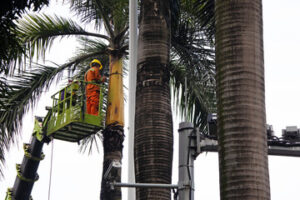As a pool company, you don’t receive a regular paycheck but rather earn money based on the number of transactions that occur each month. This means that your business can experience slower periods where you may take away less money than normal.

Ask for references from satisfied customers. It’s also a good idea to choose a contractor that adheres to local building codes and standards. Visit https://www.thewoodlandspoolcompany.com/ to learn more.
An in-ground pool is a strong and lasting structure capable of holding thousands of gallons of water. Its construction consists of an in-ground shell made of concrete, reinforced with steel for strength and structural integrity. The shell is then filled with a mixture of water and chemicals, creating a watertight seal that keeps out contaminants and debris. The pool’s interior is typically lined with tile or fiberglass. Depending on the client’s preferred aesthetic, they can choose from a variety of colors and textures to match their home.
Pool equipment, such as the pool pump and heater, is essential for maintaining a clean and safe swimming environment. The pump ensures that the water circulates continuously, while the heater keeps it at a comfortable temperature. Other important components include the return jets, which are strategically placed to distribute filtered and heated water evenly throughout the pool. A properly functioning suction line system is also crucial, preventing clogs that may hinder the pool’s circulation.
The color of a pool is equally important, as it blends with the sky’s reflection to create a dynamic visual effect that changes with the time of day and weather conditions. A thoughtful selection of interior hues can make a pool shimmer under bright sunlight or glow softly on overcast days. A color wheel is a helpful tool to use when choosing a palette, as it organizes colors into their primary, secondary, and tertiary shades and explains how they interact with one another.
A well-designed pool should incorporate a deck and lawn area, which can be used for lounging or playing games. Wooden or composite decking can provide a natural, warm contrast to the cool waters of the pool. A lawn can be planted with drought-resistant grasses to maintain a green, lush aesthetic around the pool.
Installation
The construction of a swimming pool is a major undertaking and requires multiple contractors to complete the work. Using an experienced, professional pool company is the best way to ensure that the final product meets your expectations and complies with local zoning laws, property lines, and underground utilities.
The installation process starts with a dig of the appropriate size hole and the placement of the sand filler. Then, the pool shell is lifted into place with a crane or boom truck. This is the most expensive phase of the entire project, so it’s essential to consider all options and features before selecting a particular pool shell type.
A good contractor will help you navigate the permitting process and make sure all paperwork is filed properly. This will prevent problems down the road, such as violations due to improper sizing or layout.
The plumbing system is crucial to a functioning, safe pool. The pump and filter must be correctly sized to the volume of your pool, or they will not operate efficiently. Choosing the right type of pipe (PVC, CPVC, or stainless steel) is important for durability and cost. The piping system should also be pressure tested before pouring the concrete, to make sure everything is leak-proof.
Other accessories and systems may be added during the construction process. LED lighting adds a splash of color and can be programmed for different effects. Solar heating systems are a cost-effective and eco-friendly way to keep your pool at a comfortable temperature throughout the year. Water heating systems also improve the quality of your pool’s water and allow you to extend your swim season.
Pool plaster is a cement-based material that gives your pool its surface finish. It comes in a variety of colors and textures, and there are many types of tile that can be installed on its interior surfaces. A pool plaster job also requires a lot of labor, as well as the necessary tools such as a wheelbarrow and shovels for moving backfill around the excavation site. A grading rake and transit level are also essential for fine-tuning the base.
Maintenance
Having professional cleaning and maintenance performed by a pool company is essential to keep your pool in pristine condition. However, it is also a good idea to learn some of the basic maintenance and cleaning tasks that you can do yourself on a regular basis. This will save you money in the long run and may allow you to address a minor issue before it becomes an expensive repair.
Performing routine cleaning and monitoring chemical levels is a vital part of effective swimming pool care. Regular cleaning keeps your water healthy and sparkling, while preventing the build-up of contaminants and debris. It also helps to extend the life of your pool structure and equipment.
The health of your pool is also largely dependent on the quality and cleanliness of your water, which can be achieved through proper circulation, regular cleaning, and balanced chemicals. Proper circulation keeps water moving, helping to distribute chemicals and prevent the growth of algae. Cleaning the skimmer basket and brushing the walls and floor of your pool are important daily tasks that help to remove dirt, leaves, and other debris from the surface of your pool.
Maintaining a sanitary environment is critical to swimmer safety and enjoyment, and this can be accomplished through regular cleaning and attentive filtration system maintenance. Regularly testing your pool’s pH, chlorine levels, alkalinity, and calcium hardness with a reliable pool testing kit is crucial to maintaining balanced water. Administering a shock treatment after heavy use or following bad weather conditions is also a necessary maintenance step to ensure that the water in your pool remains clear and safe for swimming.
Maintaining your swimming pool requires commitment and the right tools to keep it looking great throughout the year. By implementing these maintenance tips and following the advice of your pool service company, you can enjoy a clean and inviting pool for many years to come.
Repairs
A well-equipped swimming pool company can quickly identify and resolve problems. They can also perform routine maintenance, such as weekly water analysis and balancing, cleaning of the pump strainer and skimmer basket, adding chlorine and other chemicals to the water, and scrubbing the interior walls of the pool for a clean environment. These services help prevent water quality issues from arising. They can save you time, money, and effort by preventing costly repairs and improving your pool’s water clarity and safety.
Maintaining precise chemical levels is essential for ensuring the safety of pool water and protecting the integrity of the equipment. DIY enthusiasts may attempt to balance the chemicals themselves, but achieving and maintaining perfect levels of pH, total alkalinity, and chlorine is a complex task that requires the services of a professional. Using industry expertise and advanced technologies, pool companies can keep your water sparkling clean and safe for swimming.
In addition to the standard cleaning and equipment repair, a good swimming pool service will upgrade you to energy-efficient, automated equipment that reduces your utility bills and saves you time. This can make the difference between a frustrating struggle with sanitizers and crystal clear, sparkling water.
Choosing a swimming pool company that is reliable, customer service-oriented, and affordable is an important step in a smooth swimming season. They should be able to provide you with detailed information about the services they offer, and be quick in checking out issues that need repair.
The level of experience that a pool company has is another crucial factor to consider. This determines the kind of work they can deliver and the kind of results they can achieve. They should have a pool of certified technicians who can handle different kinds of problems. Their knowledge and expertise can help them provide the best service to their clients.
Moreover, the company should be able to hire qualified and experienced lifeguards to ensure that they can handle emergency situations. They should conduct thorough interviews and assessments to evaluate communication skills, situational awareness, and rescue abilities. In addition, they should collaborate with local emergency services to conduct regular drills to prepare their staff for any emergencies that might arise.



